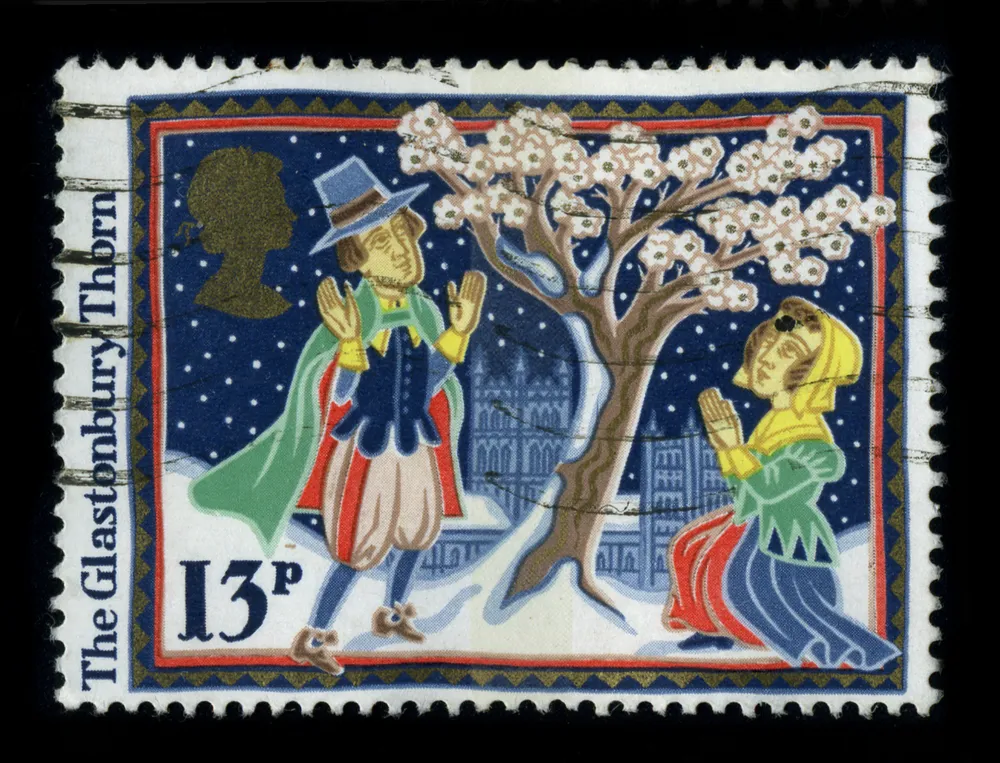The Holy Thorn refers collectively to the special variety of hawthorn that grows in and around Glastonbury but also to the legendary, original tree, said to have sprouted from the wooden staff of St. Joseph of Arimathea.
Joseph was the Jewish councilmember who offered his own tomb as a resting place for Jesus’ body after his crucifixion, and numerous legends say he visited Glastonbury. Whether or not Joseph ever actually set foot in England is a matter of some debate — historical accounts of his visit did not emerge until centuries after the time that Joseph lived.
But nevertheless, the legend does speak to the holiness associated with the area. At one point Glastonbury was home to one of the only churches in the world dedicated to Mary. Later, it was home to a monastery from the seventh century up until the repression of Henry VIII. The first mention of the Holy Thorn blooming at Christmastime appears to be in 1535, in the midst of Henry’s oppression. Through the years, popular devotion to the thorn fell in and out of favor, experiencing somewhat of a renaissance during the Victorian era.
The Holy Thorn also has royal connections. Every Dec. 8, in a tradition dating back nearly a century, a sprig of Holy Thorn is taken from a specimen growing in a Glastonbury churchyard and sent to Buckingham Palace, where it adorns the Christmas table of the monarch.

Credit: Source link




